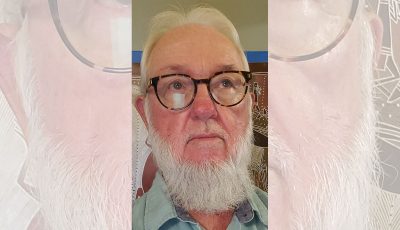The old man and the seashell
Since our profound encounter with destiny at the Sugar Dock coral reef breach where we drifted out to open sea, I resolved never again to wander into the coral reef line in search of fresh seashells and concentrate on gathering the encrusted ones near the shore. But I wandered too far three Sundays ago.
I was at the lagoon near Quartermaster when my gang of four claimed the afternoon, three took their spear guns and went chasing for octopus on the rocks by the green seaweed grassy lagoon while the fourth spread the picnic blanket on the ground. I was asked to hunt my seashells north, near the coral reef line away from the octopus hunt.
I headed for the distant line, assured that this time there was no breach current to tow me out into the open sea, in this case floats four prepositioned ships with enough supplies rumored to equip a battalion of Marines of all their needs—food, weapons, ammunition, personnel carriers, Sherman tanks, and helicopters for a whole month!
The late Ruth Tighe reminded me that the shells by the reef in situ were for admiring, not for harvesting. If an item found its way into a visitor’s pocket, the coastal resource folks will frown but were lenient, and the custom’s officers won’t question too much at the airport, and I live legally but dangerously.
An associate from the Shenyang Waterbear Language Studio in town for a month joined the octopus hunt. On Pau Pau and Wing beaches in previous weeks, the group caught a pufferfish (a Japanese delicacy in spite of the toxin 1,200 times more potent than cyanide). The neighbor who is a restaurant chef prepared the pufferfish sashimi. I ate some; am still alive, in a manner of speaking.
I snorkel for old shells—cones, conches, cowries, and augers. The ceriths, a terrebridae, I recently picked out from the lagoon floor is a beaut. The tan color and the brownish-red spots make it look very regal save whoever got it close to shore chipped the upper lip, exposing a pearl-like texture underneath but looking like an old man whose top is bald and whose one side is cropped.
On the auger’s body is a neat hole bored by predators. Save for the innards’ stench that refused to come out in spite of two-day soaking in chlorine, it was a magnificent specimen of a coral shell retired near the shore. Pyramid conches looked good also after brushing the salt off them. This time, heading for the coral reef, I brought a plastic bag ready in case I get to haul lots of seashells.
I didn’t make it to the coral reef. I underestimated the depth of the lagoon at high tide and I found myself treading water most of the way. For a swimmer, it is hard to drown with the high salinity that keeps body afloat even without a floating vest. There were rocks and corals enough before the reef line so my snorkeling was a visual feast until a calf cramp cramped my swimming style. I chose a rock to stand on and got me off treading water.
If you thought this was about seashells, you are partly right. It is about crustaceans clothed in salty encrustations, but right along picking them is the consciousness of aging.
I shunned the fresh shells on the coral reef line where the shell dwellers are still spitting their saliva, genetically programmed to create specific shapes. Normally, I pick the dead ones in the sand buried to weather tides and typhoons, resigned to biodegrade in time. The analogy of the seashells with my aging is unmistakable.
It was on the swim back to shore that I felt the receding tide was too strong to keep me from rapidly gaining distance and. having been on the water for more than an hour, the cramps persisted. I remember my Mom’s comment in northern Luzon after my second drowning barely at 4 that I “would meet my end in water.” I didn’t want to tempt fate. The high waters, the tide, and my cramps presented a formidable challenge that meant time and effort to make it back to shore. Not too alarmed, applying destinal participation to fate, I readied for the effortful long haul toward shore, perhaps ’til dusk.
My gang of four scoured the horizon for sight of my snorkel with no success. Alarmed, they flagged down a fisherman for assistance. He asked how old I was and when told I was 70, he paddled his canoe fast in my direction. He showed up just in time as water began intruding into my air spout; towed me to where I could comfortably feel the ground under my feet.
My university in Shenyang spells my name “Hemi” and pronounced it the same way. The spelling of “Jaime” (hie meh) came to them as weird for the sound, but it got my students to call me lao ye ye (grandpa) “Hemingwei,” and with Ernest’s The Old man and the Sea as required reading in high school, the renowned novelist easily came as a reference. The main character in the novel is Santiago, James to moderns, aka Jaime.
On Sunday, this old salt and the terrebridae came chipped but still looked majestic, and believe it or not, we can still make the distance!



























